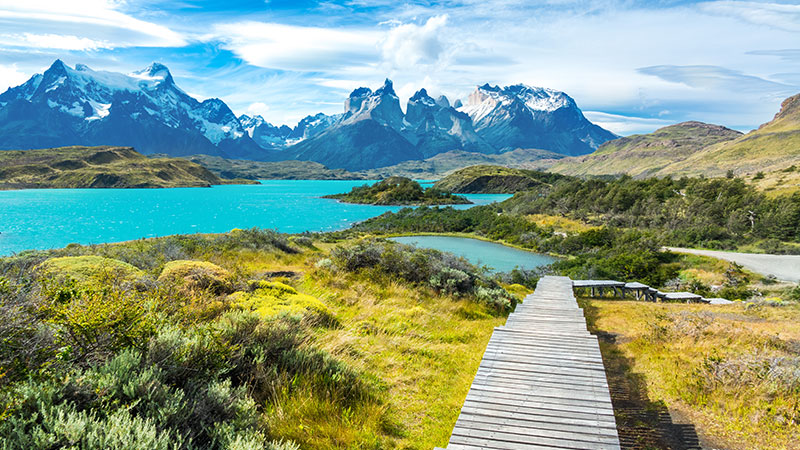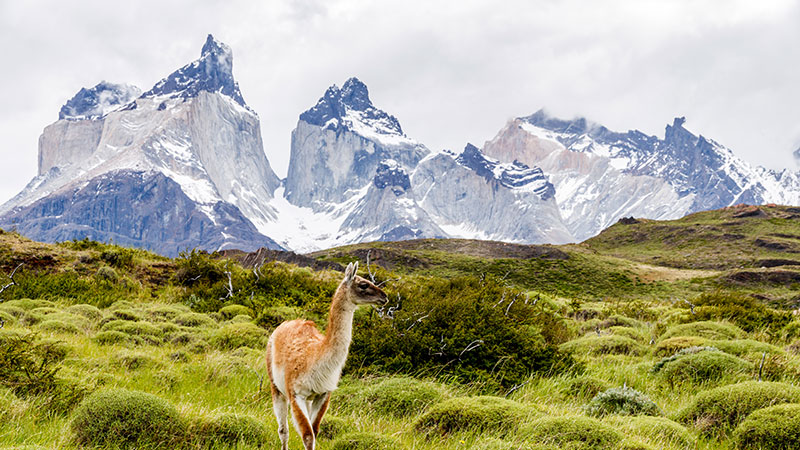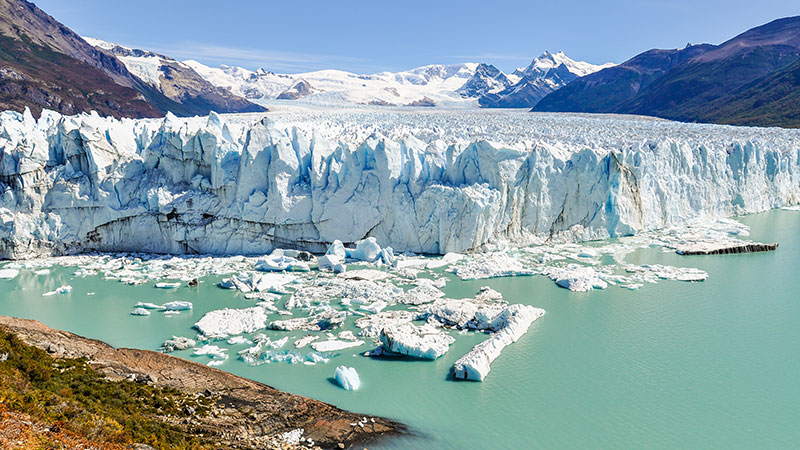
Peak Patagonia: A Look at Two Unforgettable UNESCO Sites

December 15, 2023
5 minute read
Among the many highlights of our small-group Explorations Patagonia: Edge of the World tour are visits to the region’s UNESCO sites: Torres del Paine National Park and Perito Moreno Glacier. These are just two of the places of unparalleled beauty that you'll experience in Patagonia… and here are some fun facts to pique your interest even more!
TORRES DEL PAINE NATIONAL PARK
One of South America’s most spectacular national parks and wildly popular with hikers, Torres del Paine National Park was designated a UNESCO Biosphere Reserve in 1978.

It holds over 700 square miles (1813km2) of pure amazement, with mountains, glaciers, lakes, rivers, cliffs, waterfalls, fjords, forests, and grasslands all within its boundaries. It’s got loads of wildlife, including guanacos (related to llamas), pumas, foxes, huemul (South Andean deer), wild horses, condors, eagles, hawks, rheas, and owls. So many photo ops!

Fun facts
- Torres del Paine means “towers of blue.” Paine (“blue”) is from the Tehuelche language of the region’s indigenous people. The “towers” are the three peaks of the Paine Massif, with the tallest one, Cerro Paine Grande, soaring 9,461 feet (2883m) above sea level.
- The park plays host to more than 250,000 visitors each year.
- Lady Florence Dixie, a Victorian-era writer, war correspondent, and proto-feminist, visited Patagonia in 1878, one of the very first Europeans to do so. She called the three towers “Cleopatra’s Needles,” and returned home with a pet jaguar (not recommended).
- The park’s many lakes are known for their intense, milky blue hues, caused by mineral deposits.
- Torres del Paine is home to more than 115 species of birds (including birds of prey) and seven different species of orchids.
- In 2014, scientists discovered almost 50 complete skeletons of extinct dolphin-like reptiles called ichthyosaurs under a melting glacier. Measuring up to 60 feet (18m) long, they lived until about 90 million years ago.
PERITO MORENO GLACIER
Glaciers, as we know, are huge masses of thick, dense ice that develop over thousands of years. They form on land and are in constant – if very slow – motion. Patagonia is home to hundreds of glaciers, the most famous one being the Perito Moreno Glacier, which is an astonishing 19 miles (30.5km) long and, on average, 240 feet (73m) tall.

Covering nearly 100 square miles (259km2), this enormous blue-and-white mass sits in the turquoise waters of Argentino Lake, flanked by soaring mountains. It’s a very active glacier, moving up to six feet (1.8m) a day, with huge pieces of ice calving (breaking away) frequently. So, far from being silent, the glacier actually makes quite a bit of noise, with all the creaking, cracking sounds of shifting and breaking ice.
Fun facts
- The glacier was first seen by a European in 1879, and named after an officer in the Chilean Navy, Francisco Gormaz. Later, it was given the name Bismarck, after the Prussian statesman. In 1899, it was renamed yet again, this time for 18th-century explorer Francisco Moreno. (Perito is Spanish for “expert” or “proficient.”)
- Perito Moreno Glacier is one of the few glaciers in the world currently in a state of equilibrium – it’s growing and receding at the same rate.
- The glacier isn’t just tall, it’s deep, too, extending about 550 feet (167m) below the surface of the lake. Its maximum depth is a jaw-dropping 2,297 feet (700m).
- Every few years, the glacier advances so far that it causes the water on the southern side of Argentino Lake (called the Brazo Rico) to dam up. The enormous pressure of the dammed water (which can rise over 90 feet/27m) causes a huge rupture that sends it pouring back into the main part of the lake.
- Perito Moreno Glacier is so massive it’s the third-biggest reserve of fresh water in the world.
These UNESCO sites are just two of the incredible experiences awaiting you in Patagonia. If you’re an adventurer at heart, our small-group Patagonia: Edge of the World tour is the perfect journey. Read about tour highlights or listen to tales from the tour’s designer, Samantha Kern, about her experience on our Travel Unpacked podcast!
What is UNESCO?
UNESCO stands for United Nations Educational, Scientific and Cultural Organization. It’s a special agency of the U.N. dedicated to promoting peace through international cooperation in the arts and sciences, education, and culture.
What’s a UNESCO World Heritage Site?
These are sites marked as protective zones, meant to be preserved for posterity because of their cultural, historical, or scientific importance. Countries nominate their sites for designation, and an international committee evaluates their global significance. Currently, there are 1,199 World Heritage Sites, spanning 168 countries.
